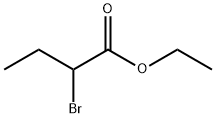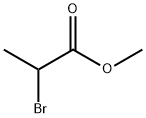ETHYL METHYL ETHER
- CAS NO.:540-67-0
- Empirical Formula: C3H8O
- Molecular Weight: 60.1
- MDL number: MFCD00059370
- SAFETY DATA SHEET (SDS)
- Update Date: 2024-12-18 14:07:02

What is ETHYL METHYL ETHER?
Description
Ethyl methyl ether (methoxyethane, IUPAC) is a colorless liquid that is soluble in water. Specific gravity is 0.70, which is lighter than water. It is highly flammable, with a flammable range of 2%–10.1% in air. Boiling point is 51°F (10°C), flash point is ?35°F (?37°C), and ignition temperature is 374°F (190°C). Vapor density is 2.07, which is heavier than air. In addition to flammability, ethyl methyl ether is an anesthetic and can form explosive peroxides as it ages. The four-digit UN identification number is 1039. The NFPA 704 designation is health 1, flammability 4, and reactivity 1. The primary use is in medicine as an anesthetic.
Chemical properties
Colorless liquid. Soluble in water; miscible with alcohol and ether.
Chemical properties
Methyl ethyl ether is a colorless liquid or gas at room temperature.
The Uses of ETHYL METHYL ETHER
Medicine (anesthetic).
Definition
ChEBI: An ether that is the methyl ether derivative of ethanol.
General Description
A clear colorless gas with a medicine-like odor. Flash point -35°F. Boiling point 52°F. Less dense than water. Vapors are heavier than air. Under prolonged exposure to fire or heat the containers may rupture violently and rocket.
Air & Water Reactions
Highly flammable. Soluble in water. Oxidizes readily in air to form unstable peroxides that may explode spontaneously [Bretherick, 1979 p.151-154, 164]. A mixture of liquid air and diethyl ether exploded spontaneously, [MCA Case History 616(1960)].
Reactivity Profile
Ethers, such as ETHYL METHYL ETHER, can act as bases. They form salts with strong acids and addition complexes with Lewis acids. The complex between diethyl ether and boron trifluoride is an example. Ethers may react violently with strong oxidizing agents. In other reactions, which typically involve the breaking of the carbon-oxygen bond, ethers are relatively inert.
Hazard
Highly flammable, dangerous fire and explosion risk.
Health Hazard
Vapors may cause dizziness or asphyxiation without warning. Some may be irritating if inhaled at high concentrations. Contact with gas or liquefied gas may cause burns, severe injury and/or frostbite. Fire may produce irritating and/or toxic gases.
Fire Hazard
EXTREMELY FLAMMABLE. Will be easily ignited by heat, sparks or flames. Will form explosive mixtures with air. Vapors from liquefied gas are initially heavier than air and spread along ground. CAUTION: Hydrogen (UN1049), Deuterium (UN1957), Hydrogen, refrigerated liquid (UN1966) and Methane (UN1971) are lighter than air and will rise. Hydrogen and Deuterium fires are difficult to detect since they burn with an invisible flame. Use an alternate method of detection (thermal camera, broom handle, etc.) Vapors may travel to source of ignition and flash back. Cylinders exposed to fire may vent and release flammable gas through pressure relief devices. Containers may explode when heated. Ruptured cylinders may rocket.
Safety Profile
Has anesthetic properties. A very dangerous fire and moderate explosion hazard when exposed to heat or flame; can react vigorously with oxidizing materials (e.g., air, O2). To fight fire, use alcohol foam, CO2, dry chemical. See also ETHERS.
Potential Exposure
Used as a medicine and anesthetic.
First aid
If this chemical gets into the eyes, remove anycontact lenses at once and irrigate immediately for at least15 min, occasionally lifting upper and lower lids. Seek medical attention immediately. If this chemical contacts theskin, remove contaminated clothing and wash immediatelywith soap and water. Seek medical attention immediately. Ifthis chemical has been inhaled, remove from exposure,begin rescue breathing (using universal precautions, including resuscitation mask) if breathing has stopped and CPR ifheart action has stopped. Transfer promptly to a medicalfacility. When this chemical has been swallowed, get medical attention. Give large quantities of water and inducevomiting. Do not make an unconscious person vomit.
storage
Color Code—Red Stripe: Flammability Hazard:Store separately from all other flammable materials. Prior toworking with methyl ethyl ether you should be trained on itsproper handling and storage. Before entering confined spacewhere this chemical may be present, check to make sure thatan explosive concentration does not exist. Store in tightlyclosed containers in a cool, well-ventilated area away fromoxidizers, strong acids. Where possible, automatically pumpliquid from drums or other storage containers to processcontainers. Drums must be equipped with self-closingvalves, pressure vacuum bungs, and flame arresters. Useonly nonsparking tools and equipment, especially whenopening and closing containers of this chemical. Whereverthis chemical is used, handled, manufactured, or stored, useexplosion-proof electrical equipment and fittings.
Shipping
UN1039 Methyl ethyl ether or Ethyl methyl ether, Hazard Class: 2.1; Labels: 2.1-Flammable gas.
Purification Methods
Dry the ether with CaSO4, pass it through an alumina column (to remove peroxides), then fractionally distil it. [Beilstein 1 H 314, 1 I 158, 1 II 311, 1 III 1288, 1 IV 1314.]
Incompatibilities
May form explosive mixture with air. Incompatible, dangerous reaction with oxidizers (chlorates, nitrates, peroxides, permanganates, perchlorates, chlorine, bromine, fluorine, etc.). Keep away from alkaline materials, strong acids (may be explosive), strong bases. May form explosive peroxides on standing.
Waste Disposal
Dissolve or mix the material with a combustible solvent and burn in a chemical incinerator equipped with an afterburner and scrubber. All federal, state, and local environmental regulations must be observed.
Properties of ETHYL METHYL ETHER
| Melting point: | -113.15°C |
| Boiling point: | bp 10.8° |
| Density | d00 0.725 |
| refractive index | 1.3441 |
| Merck | 3828 |
| CAS DataBase Reference | 540-67-0 |
| EPA Substance Registry System | Ethane, methoxy- (540-67-0) |
Safety information for ETHYL METHYL ETHER
Computed Descriptors for ETHYL METHYL ETHER
New Products
3-Iodophenylacetic acid 3-Pyridineacetonitrile, α-hydroxy- 2-Propanamine, 1-chloro-, hydrochloride (9CI) 3-(hexyloxy)-4-(pyridin-3-yl)-1,2,5-thiadiazole 2-Hexyn-1-ol Dibenzo-18-crown-6 Nickel(II) perchlorate hexahydrate, 98% 4-Bromophenylacetonitrile, 95% 3-Bromo-4-fluoroaniline, 97% Sodium tetraborate decahydrate, 98% Palladium(II) acetate, trimer, Pd 99% 4-Bromo-2-chlorotoluene, 97% N N Dimethylformamide Dimethyl Acetal (Dmf Dma) 2,3-Dichloro Benzoyl Cyanide [Side Chain] Bis(2-Chloroethyl) Amine Hydrochloride L-Glutamic Acid Diethyl Ester Hydrochloride 5-(Difluoromethoxy)-2-Mercaptobenzimidazole 1-Ethyl-3-(3-Dimethylaminopropyl)-Carbodiimide Hydrochloride [EDC Hcl] 1,4-Napthoquinone Bromoiodomethane Sodium Bicarbonate Methylene Dichloride (MDC) Ethyl Acetate Indole-3-Carbinol (I3C)Related products of tetrahydrofuran








You may like
-
 17604-74-9 3-Pyridineacetonitrile, α-hydroxy- 98+View Details
17604-74-9 3-Pyridineacetonitrile, α-hydroxy- 98+View Details
17604-74-9 -
 131987-69-4 98+View Details
131987-69-4 98+View Details
131987-69-4 -
 2-Hexyn-1-ol 98+View Details
2-Hexyn-1-ol 98+View Details
764-60-3 -
 Cyclohexane, (2-propynyloxy)- 67967-07-1 98+View Details
Cyclohexane, (2-propynyloxy)- 67967-07-1 98+View Details
67967-07-1 -
 764-60-3 2-Hexyn-1-ol 98+View Details
764-60-3 2-Hexyn-1-ol 98+View Details
764-60-3 -
 2-Propanamine, 1-chloro-, hydrochloride (9CI) 98+View Details
2-Propanamine, 1-chloro-, hydrochloride (9CI) 98+View Details
5968-21-8 -
 3-Iodophenylacetic acid 1878-69-9 98+View Details
3-Iodophenylacetic acid 1878-69-9 98+View Details
1878-69-9 -
 132945-75-6 (S)-1-Boc-3-methanesulfonyloxy-pyrrolidine 98+View Details
132945-75-6 (S)-1-Boc-3-methanesulfonyloxy-pyrrolidine 98+View Details
132945-75-6
